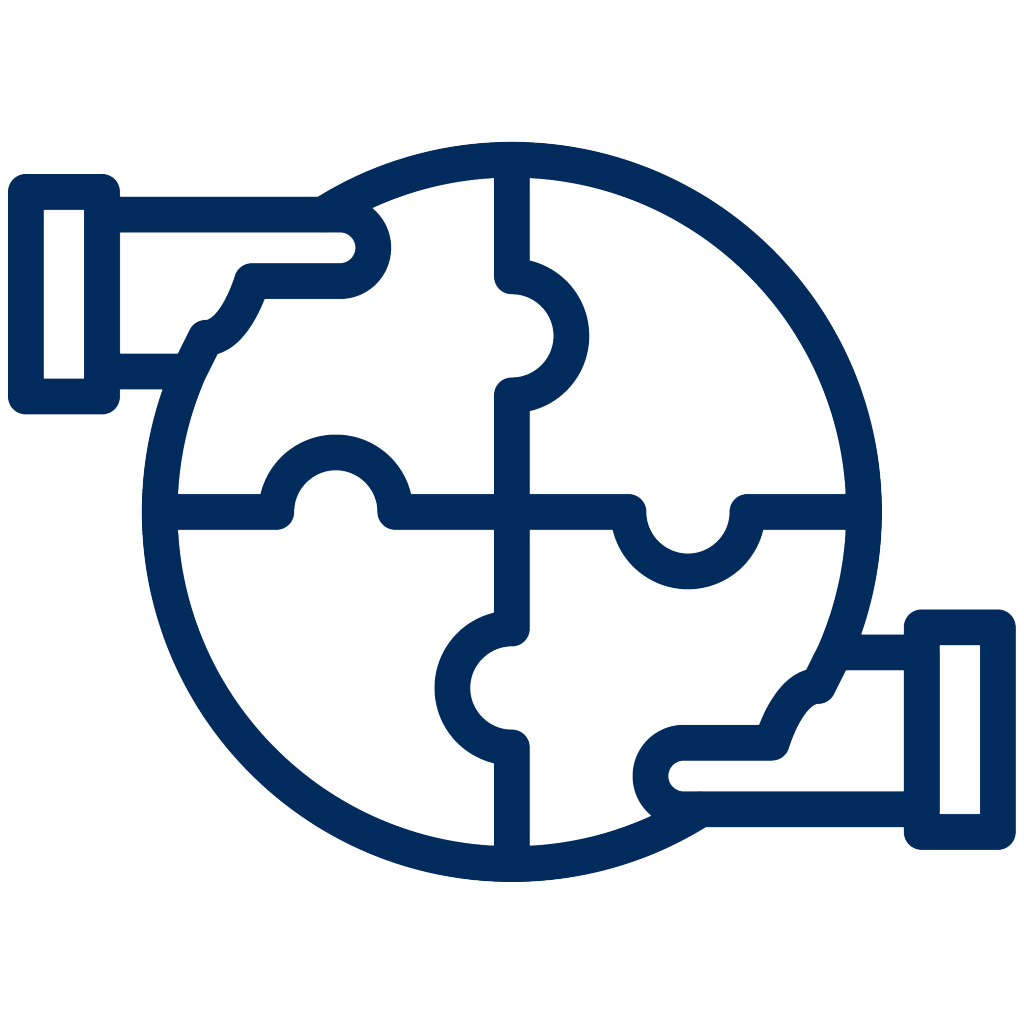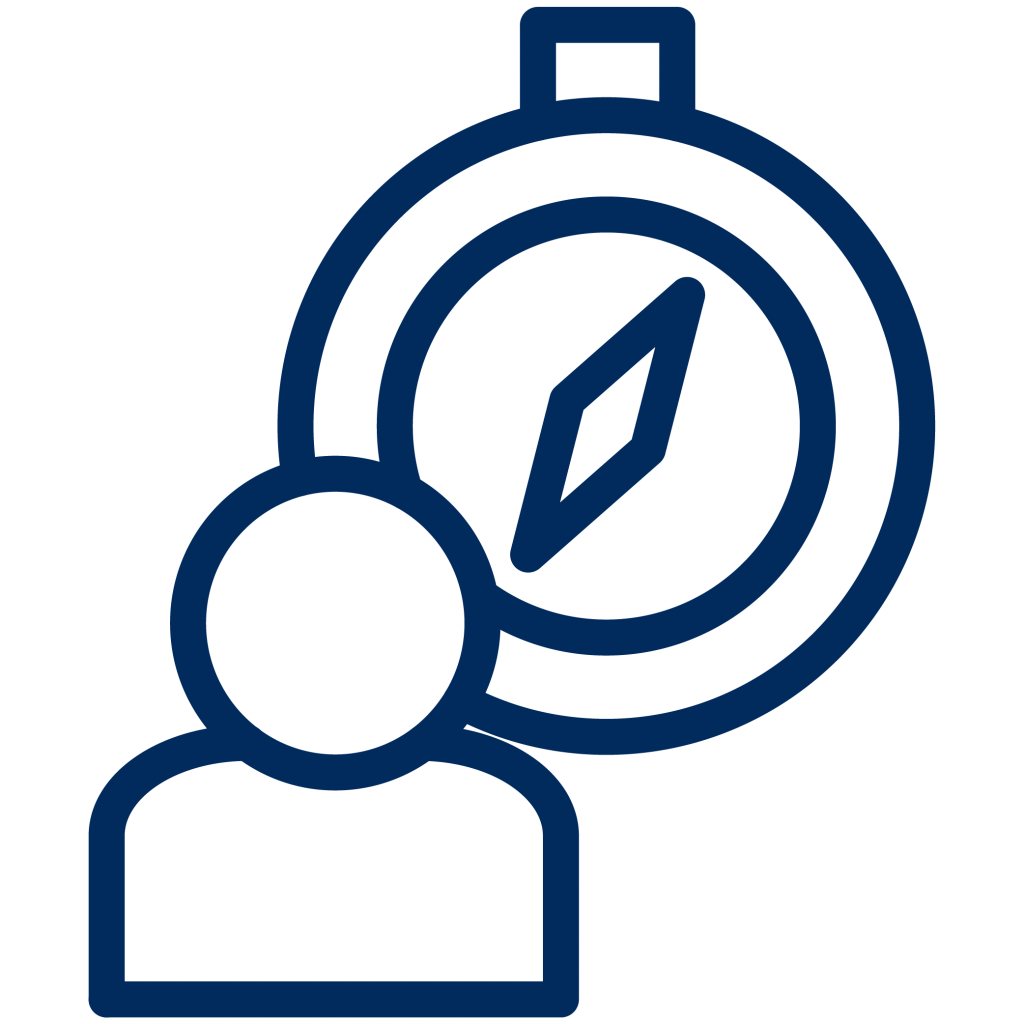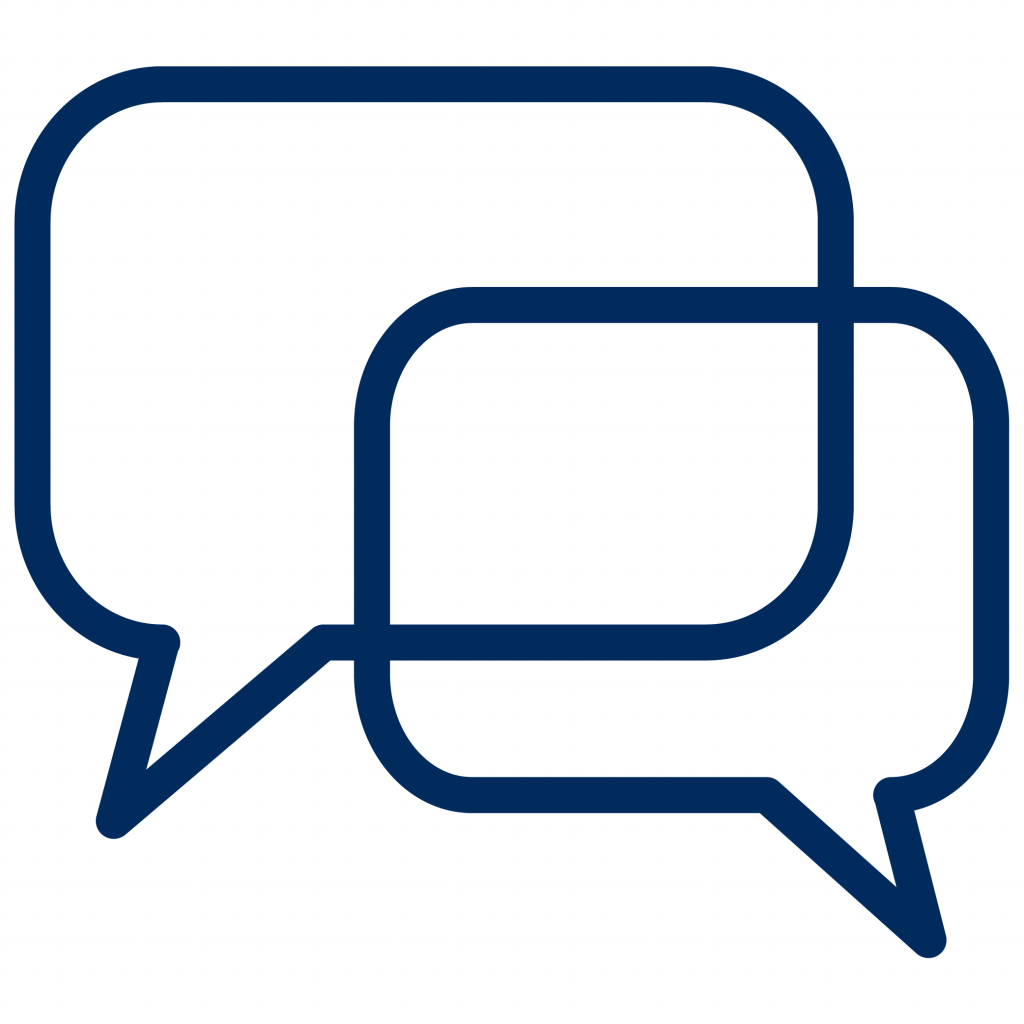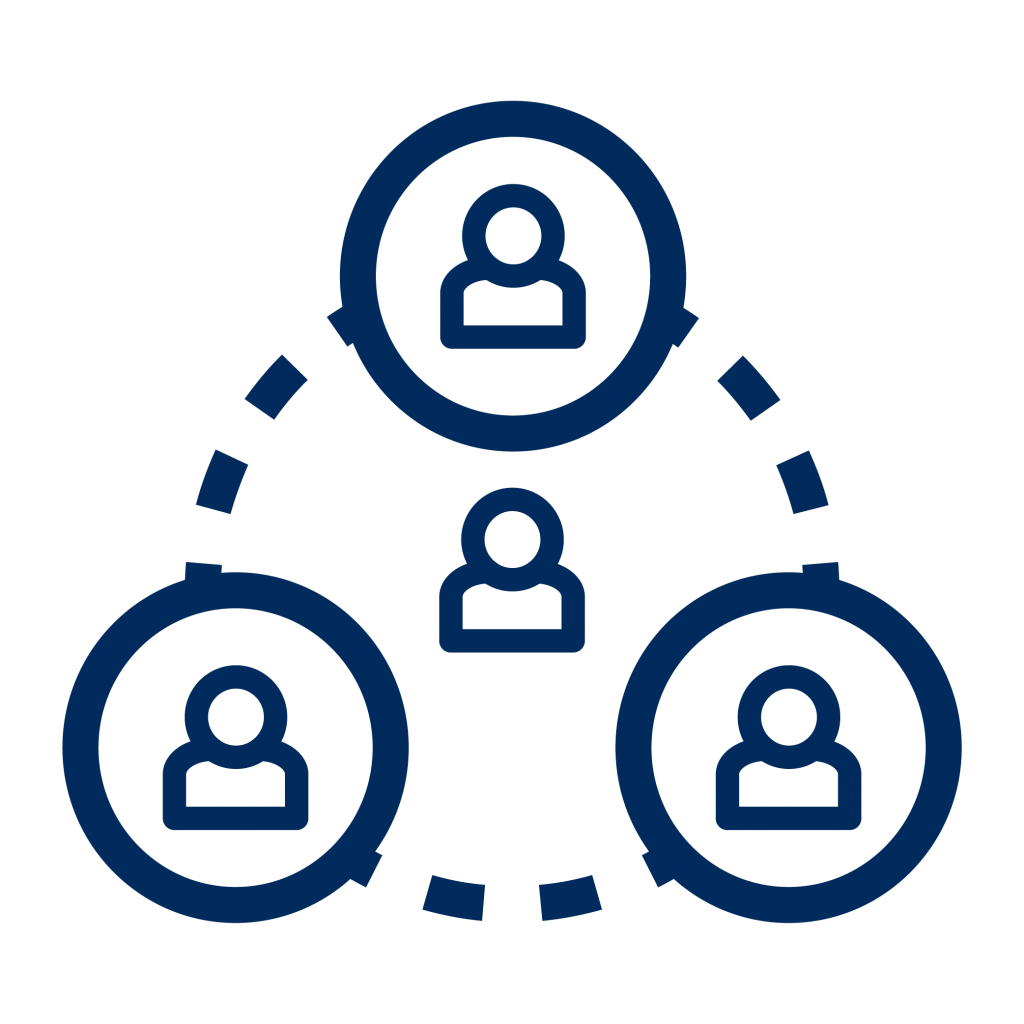
With restrictions in place in many of our communities being flexible and responsive to new ideas has become essential. By finding creative ways to work around limitations, design thinking has come to the forefront. Organizations (like the Innovation Hub) are using design thinking to solve their own unique set of challenges, and nurture mindsets that inspire change. Since the lockdown, our Leadership Team has been navigating and responding to internal challenges in new ways and are continuing to do so – many of which are explored in this post.
Where Change Takes Place
In our work, we foster and inspire change in two major ways. Our inner community or ‘sphere’ includes our designated project teams and the individuals we work with daily – where design thinking happens in real-time. We also have an outer community or ‘sphere’ – this is the area where we work closely with UofT partners and community members. This model reinforces our understanding that the value we provide to our partners is contingent on the value of the experience we provide our student staff and volunteers. You can learn more about our models and theories of change here.
When we want to create change taking a step back and knowing where to begin is vital. We need to reflect on the challenges we continue to experience in order to get to core values and needs. By doing this, we can then begin adopting a design thinking mindset.
Challenges Working Virtually as a Team
There were four major challenges recognized by our Leadership Team during a group brainstorming session. Through a series of questions, we considered what sort of challenges and moments of success have occurred since working virtually as a team. Some core challenges we named were time management, communication & engagement, accountability and team rapport:

- Time Management: When working from home, the line between work, academics and home life often gets blurry. We quickly acknowledged how communicating work boundaries early on and sticking to them is an important skill to have. Especially when working on more collaborative projects.

- Communication & Engagement: Another challenge that quickly became apparent was nurturing engagement and consistent communication. This is a particular concern when working with a large team. With cameras off in meetings, it can be awkward to gauge what team members are thinking. Also, video platforms tend to limit conversations which is why we’ve used breakout rooms & ice breaker sessions to engage our team.

- Accountability: Regularly connecting with team members on project timelines and expectations is easier to do in person. Without regularly checking in with team members or having virtual co-working sessions, it can be difficult to effectively stick to (and communicate) our many project timelines.

- Team Rapport: Building a rapport with new team members virtually is challenging to do virtually. For a large team like ours, reaching out to members outside of our smaller respective teams can feel like we’re contacting a distant relative. Therefore, weekly check-ins and updates are integral in a virtual workspace.
How Design Thinking Mindsets Come To Life
By naming these challenges, we have come to understand that needs such as consistent communication, fostering belonging in our teams, and transparency in our work are crucial to adopt to new changes and continually innovate in our communities. This, however, cannot be done without a design thinking mindset. The tools we have crafted as design thinkers have helped us get to the root of these problems. Below are three mindsets that we primarily use to approach these challenges:
- Empathy: we actively make space for moments to listen to what others have to say, connect based on real-life experiences and challenges, and build trust.
- Collaboration: by making space to collaborate (such as virtual co-working hours) we can gauge where others are at with the work, commit to timelines, and be accountable with one another.
- Experimentation: Through empathy and collaboration we have a space for true experimentation of ideas, concepts, and projects. We can embrace failure, learn new things, and challenge our perceptions of complex problems.
Other mindsets are also important – such as optimism and welcoming ambiguity – and these are woven throughout our three core mindsets. Design thinking mindsets can be adopted by anyone. It’s just a matter of taking a step back, understanding where the change in our work begins, and asking the right questions to better understand a problem. This can be easier said than done because many of us have the instinctive urge to tackle a problem right away. Being in the right mindset(s) helps alleviate this urge and can help you prepare and overcome unforeseen challenges that come along the way.
There are lots of ways that you can bring these mindsets into your space, which we have written about throughout our blog! Feel free to check out the below posts to foster design thinking mindsets in your communities:
0 comments on “Using Design Thinking Mindsets For Rapid Change”